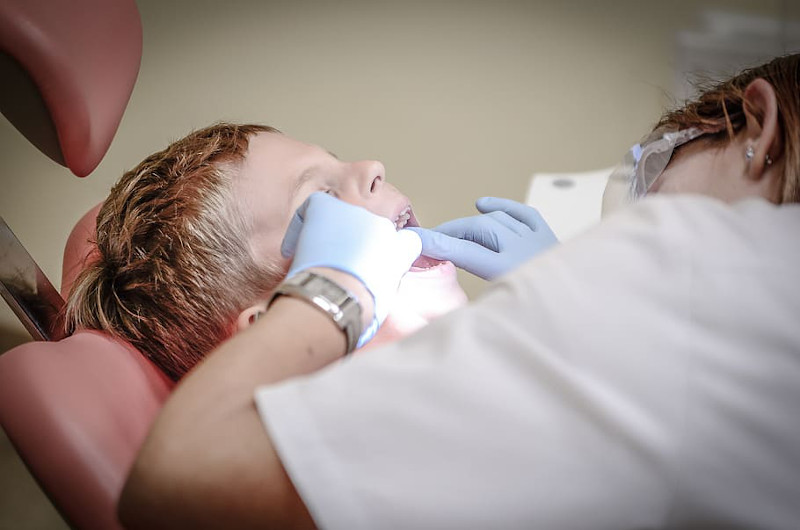In the simplest of terms, a palate expander is a device used in orthodontics to widen a narrow palate (the roof of the mouth). It creates more space by correctly aligning the upper teeth and jaw. By using a palate expander earlier in life, you help prevent malocclusions (bad bites) further down the road.
A crossbite, crowding, or impacted teeth are just a few reasons to talk to an orthodontist about using a palate expander. In other cases, a palate expander may simply be wanted for aesthetic purposes. Either way, understanding the pros and cons of the device is a good start to deciding if it’s the right treatment for you or your child.
How Do Palate Expanders Work?
The roof of your mouth (your palate) has two halves joined by a “suture” that runs down the middle. A palate expander attaches to your upper molars by bonded bands and applies pressure that eases apart those two halves. As the roof of your mouth widens, new bone fills in between the two halves of the palate.
Types of Palate Expanders
Palate expanders are designed to meet an individual patient’s needs. Below are a few types of these devices:
- Rapid palatal expander (rapid maxillary expansion): The rapid palatal expander is a common treatment option for narrow palates, crowding, and crossbites. These devices feature a screw that is turned every now and then to increase the pressure against the two halves of the mouth. The device is fixed, meaning it is left in for however long treatment may be needed.
- Removable palate expander: As the name suggests, removable palate expanders may be taken out by the patient when they desire, such as while eating. These devices look similar to retainers and only support minor jaw-widening needs.
- Implant-supported palate expander: The implant-supported palate expander is a more heavy-duty option used primarily for adults. Force here is applied directly to the maxillary bone, rather than to the teeth as it is in other palate expanders.
- Surgically-assisted palate expander: This is another heavy-duty option designed for adults, with this one featuring a surgically inserted expander.
Palate Expander Pros
Your dental and overall health are indisputably connected. Any improvement made to your mouth or jaw is good for your overall health. As such, the pros of palate expanders entail more than just correcting dental issues. Using a palate expander can also improve breathing and reduce issues associated with poor airflow.
Corrects Dental Issues
As previously mentioned, palate expanders correct dental issues, such as misaligned bites, crowding, and impacted teeth. By creating more space in your mouth, a palate expander naturally fixes these kinds of alignment issues. This is because it allows your teeth to erupt in the correct places.
Compatibility
Palate expanders are often compatible with other orthodontic treatments, such as braces. Using these in conjunction lessens the amount of time you receive treatment, and potentially even the cost of treatment. In some cases, however, a palate expander may be used prior to braces, as teeth can be aligned easier once there is more space.
Improved Breathing
Restricted nasal airflow may contribute to problems such as dry mouth, mouth breathing, snoring, or sleep apnea. Research shows that rapid maxillary expansion improves nasal airflow; in school-age children, this treatment plan even bolstered students’ grades. If your child is experiencing dry mouth, mouth breathing, snoring, or sleep apnea, it is a good idea to visit an orthodontist. They can rule out whether or not these symptoms are attributed to a spacing issue in the mouth.
No Surgery
Perhaps the biggest pro to palate expanders is avoiding the pain, worries, and costs associated with receiving oral surgery (unless you need a surgically-assisted palate expander). Preventing the need for surgery however is often only possible with early intervention. As will be discussed below, palate expanders are more successful in children since their mouths and jaws have not yet fully formed.
Palate Expander Cons
For all the pros associated with palate expanders, there are cons just as well. The main con has to be that the device is relatively age-restrictive. Other cons include cost, discomfort, and smell.
Age-Permitting
Before puberty your mouth and jaw are still forming, making it easier to reshape their structure. The older you get, the more tedious and painful a palate expander can become. As a result, using a palate expander is a relatively easy and painless process for children because their mouths have not yet fully developed. Adults, on the other hand, tend to have a tougher time. This is why these devices are more effective on children than they are on adults.
Discomfort
Palate expanders can cause discomfort to both children and adults. As a metal device that is placed inside your mouth, these devices may feel unnatural. But again, it is adults who will experience more pain and discomfort.
Cost
Traditionally the price range of a palate expander treatment plan falls around $2,000 – $3,000 minimum. Nevertheless, the total cost varies according to where you live, who your orthodontist is, and whether or not you’re covered by insurance. Consult with your local orthodontist to figure out their general costs and financing options.
Smell
Food, plaque and tartar, and other objects can get stuck in your palate expander, contributing to an unpleasant smell. While this may seem like a minor issue, lasting odors can grow bothersome. Combating this issue involves using proper hygiene practices for yourself, as well as instilling them in your children.
